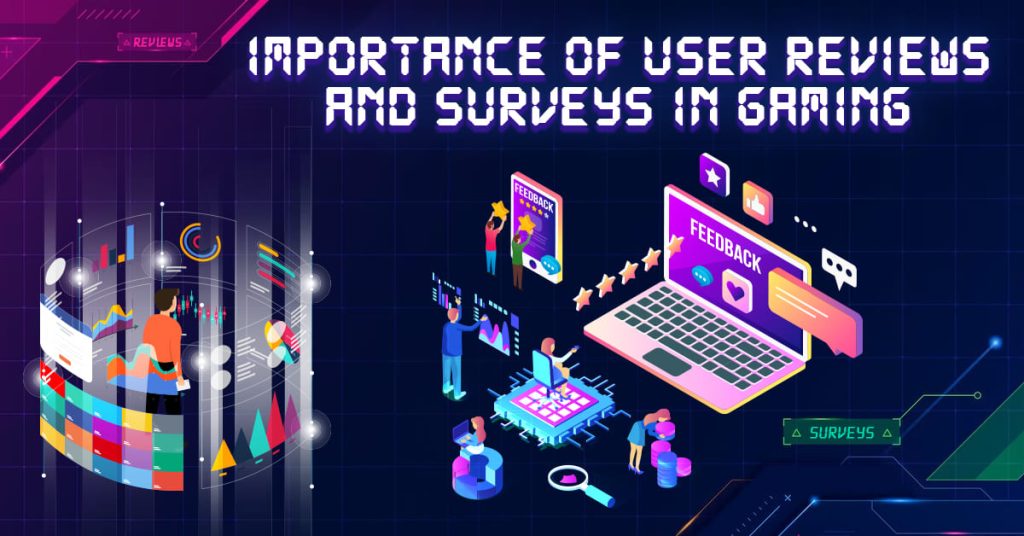
In the dynamic and ever-evolving landscape of the gaming industry, understanding player preferences and addressing their concerns is crucial for the success of any game developer. Player feedback serves as a valuable tool, providing insights into user experiences and expectations. In this article, we will explore the significance of analyzing player feedback and discuss the integration of user reviews and surveys to enhance the game development process.
The Importance of Player Feedback
Player feedback goes beyond mere opinions; it serves as a direct line of communication between game developers and their audience. Understanding what players enjoy, dislike, or desire in a game allows developers to make informed decisions that can significantly impact the overall gaming experience. Moreover, positive player feedback can serve as a powerful marketing tool, influencing potential customers and fostering a loyal player base.
User Reviews: A Window into Player Experiences
User reviews play a pivotal role in gauging player sentiment. Platforms like Google Play, the App Store, and others provide a space for players to share their thoughts on a game. Analyzing these reviews helps developers identify patterns, common issues, and standout features. Positive reviews can highlight aspects of the game that resonate with players, while negative reviews pinpoint areas that need improvement.
To effectively analyze user reviews, developers can use sentiment analysis tools and natural language processing algorithms. These tools can help categorize reviews based on sentiment, allowing developers to prioritize addressing critical issues and enhancing positive aspects.
Surveys: Tailoring Feedback to Specific Questions
While user reviews offer valuable insights, surveys provide developers with the ability to ask specific questions and gather targeted feedback. By creating well-crafted surveys, developers can delve into particular aspects of the gaming experience, such as graphics, gameplay mechanics, storylines, or multiplayer features. Surveys can also be used to gather demographic information, helping developers understand the diverse preferences of their player base.
It’s crucial to strike a balance between the length of surveys and the depth of information gathered. Short, focused surveys are more likely to receive higher response rates and provide actionable data. Additionally, incentivizing participation, such as offering in-game rewards or exclusive content, can encourage players to take the time to share their opinions.
Integration for Comprehensive Insights
To gain a holistic understanding of player preferences and concerns, developers should integrate both user reviews and surveys into their feedback analysis process. Combining these sources provides a more comprehensive view of the player experience, allowing developers to identify overarching trends as well as nuanced issues.
Developers can create a feedback loop by using the insights gained from reviews and surveys to inform updates and patches. Regularly communicating with the player base about implemented changes demonstrates a commitment to continuous improvement and enhances player trust.
The Feedback Loop: From Insights to Action
Developers can create a feedback loop by using the insights gained from reviews and surveys to inform updates and patches. Regularly communicating with the player base about implemented changes demonstrates a commitment to continuous improvement and enhances player trust. This iterative process transforms player feedback into a dynamic force driving the evolution of the game.
Furthermore, the feedback loop is a multifaceted tool for community building and engagement. Beyond the transmission of updates, developers can leverage feedback channels to initiate discussions, polls, and community events, creating a collaborative environment. This not only empowers players by giving them a voice in the evolution of the game but also transforms the player base into an active participant in the game’s ongoing development. By fostering a sense of community ownership, developers can harness the collective creativity and enthusiasm of the player base, potentially leading to innovative ideas and content suggestions that may further enrich the gaming experience. In essence, the feedback loop becomes a platform for a symbiotic relationship, where developers and players collaborate in shaping the present and future of the gaming universe.
Conclusion
Analyzing player feedback is an integral part of the game development process. By integrating user reviews and surveys, developers can gain valuable insights into player experiences, preferences, and concerns. This iterative process not only improves the current game but also lays the foundation for future projects, fostering a positive relationship between developers and their player community. As the gaming industry continues to evolve, prioritizing player feedback remains a key factor in creating successful and engaging gaming experiences.
